Ways to Use Power BI for Data Visualization and Analysis
Power BI is a powerful tool for data visualization and analysis. It allows users to connect to various data & analytics sources, create interactive dashboards and reports, and share them with others.
Here we will explore ways to visualize and analyze your data by using Power BI. From creating simple charts and graphs to more advanced features like custom visuals and data modeling, we will cover the basics and advanced techniques to help you get the most out of your data & analytics.
Whether you are a business analyst, data scientist, or just looking to gain insights from your data, Power BI can help you turn your data into actionable insights.
What Is Data Visualization?
Data & analytics visualization is representing data in a graphical or pictorial format. It aims to effectively communicate information and insights to stakeholders through visual elements such as charts, graphs, and maps. These visualizations can identify data patterns, trends, and outliers, making them easier to understand and interpret.
Many different types of data & analytics visualizations exist, including bar charts, line charts, scatter plots, and heat maps. Each type of visualization is best suited for a specific type of data and can convey different information types. For example, a bar chart is well-suited for comparing the values of different categories, while a line chart helps show changes over time.
Data visualization can be used in various fields, including business, finance, healthcare, and science. It is essential for data analysis and decision-making. This allows stakeholders to gain insights from data & analytics that is otherwise difficult or impossible to identify with other methods.
It is also increasingly important in big data as the amount of data generated continues to grow exponentially. With the help of data & analytics visualization tools, it becomes much more manageable to make sense of large data sets and extract actionable insights.
Visualizing data is a powerful technique for communicating information and insights to stakeholders through visual elements. It can identify patterns, trends, and outliers in data, making it an essential tool for data analysis and decision-making. It has become more critical due to the increasing amount of data generated. This is true in many fields, such as finance, science, and healthcare.
What is Power BI?
Microsoft has developed Power BI, a data visualization and business intelligence tool. It allows users to connect to various data & analytics sources, such as Excel, SQL Server, and online services like Google Analytics and Salesforce. It transforms the data into interactive and visually appealing reports and dashboards. The reports and dashboards can be shared with others in the organization and accessed through a web browser or mobile device.
Power BI also allows users to connect with multiple data & analytics sources. The tool includes a data modeling feature that lets users create relationships between tables and a data visualization feature that provides a wide range of charts and visualizations to represent the data.
Additionally, Power BI includes several built-in data transformation and cleaning capabilities, making it easy for users to prepare data for analysis.
Power BI also includes several collaboration and sharing features, allowing users to share reports and dashboards with others in the organization. Users can also create and share “workspaces,” groups of reports, and dashboards that multiple users can access. This makes it easy for teams to collaborate on data analysis and visualization projects.
Another important feature of Power BI is its ability to integrate with other Microsoft tools and services. This includes integration with Excel, SharePoint, and PowerApps and support for the R programming language, which can be used to create custom data visualizations and perform advanced data & analytics.
How to Visualize Data Using Power BI?
Power BI allows you to connect with multiple data & analytics sources, transform, clean, and create interactive visualizations, reports, and visualizations. Here are the steps to visualize data using Power BI:
- Connect to your data source: Power BI supports various data sources, including Excel, SQL Server, and cloud-based platforms like Azure and Google Analytics. You can connect to your data source by selecting the appropriate connector and providing the necessary credentials.
- Transform and clean your data: Once your data is connected, you can use Power BI’s built-in data transformation and cleaning tools to shape your data into the format you need for your visualization. This includes removing unwanted columns, cleaning up data types, and creating calculated columns.
- Create visualizations: Power BI offers various visualization options, such as bar charts, line charts, scatter plots, and maps. You can choose the appropriate visualization for your data and customize it to your liking by adjusting colors, labels, and other formatting options.
- Create reports: Once you have created your visualizations, you can arrange them on a report page to tell a story with your data. To create a professional report, you can add text boxes, images, and other elements.
- Share and publish: Power BI allows you to share your reports and visualizations with others by publishing them on the web or sharing them with specific people. You can also create interactive dashboards allowing users to explore your data more deeply.
In summary, Power BI is an excellent tool for visualizing data & analytics. It is easy to use, has a wide range of visualization options, and supports many data sources. By following these steps, you can create powerful and engaging visualizations and reports that will help you gain insights from your data.
Why Choose Focaloid?
Organizations can unlock the potential of their data & analytics by bringing together data from different systems in one place. Focaloid’s business intelligence and data expertise will assist you in making data-driven decisions and hence increase accuracy.
Conclusion
In conclusion, Power BI is a powerful tool for data & analytics visualization. It allows users to connect easily to various data & analytics sources, create interactive visualizations and dashboards, and share insights with others. Some key ways to use Power BI include creating pivot tables and charts to summarize data, using filters and slicers to drill down into specific data points, and creating custom calculations and measures to gain deeper insights into the data & analytics.
Power BI’s user-friendly interface and many features make it a valuable tool that can be used by any company or organization to gain insight from their data.

